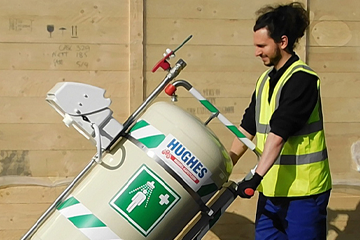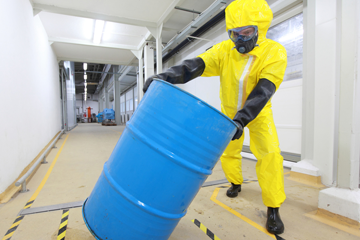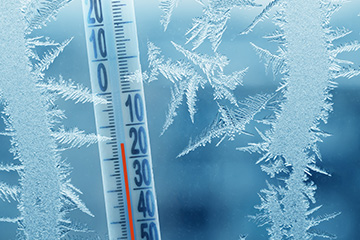Enquiry List () (0)
- 5 Feb 2021

Combatting Bacteria Growth in Safety Showers and Eye/Face wash equipment

Emergency safety showers and eye wash stations are essential for sites where workers could come into contact with hazardous chemicals. In some environments providing this life saving equipment can be challenging, for instance locations where a consistent supply of potable water cannot be guaranteed.
For these sites, emergency tank showers and self-contained units provide a viable solution. However, as this equipment can go unused for extended periods of time, the water held in a self-contained shower or eye/face wash units may become stagnant. This makes it susceptible to bacterial growth and if not properly treated and maintained can become a source of infection.
There are certain bacteria that are identified as a potential source of infection in safety showers and eye washes, including:
- Acanthamoeba, which may cause eye infections
- Pseudomonas, which may cause eye, skin, muscle, lung and other tissue infections
- Legionella, which may cause serious lung infections
Not everyone is vulnerable to these bacteria, but for those that are the resulting infections can be severe.
Bacteria thrive in temperatures between 20C (68F) and 45C (113F). Yet, EN and ANSI standards require the provision of tepid water in showers and eye baths. For EN standards this is stipulated as 15 to 37C (59 to 98F). The ANSI standard specifies 16 to 38C (60 to 100F). However, there are ways to minimise the risk of bacteria growth.
Practical Steps to Limiting Bacteria Growth
1. Weekly Activation
Standards require that safety showers and eyewash stations are tested at least once a week. This clears the line of any sediment build-up that could prevent water from being delivered to the shower or eye/face wash and displaces stagnant water in the pipework, flushing out corrosion or sediment, therefore reducing the risk of bacteria growth.
Not only will performing this test give you peace of mind that your emergency equipment is in full working order, it will also ensure you remain compliant. If a shower fails to function correctly or further injures an employee, you could face significant fines and/or imprisonment.
The weekly activation ensures that flushing fluid is readily available to the head(s) of the unit for the required time in the event of an emergency. This includes eyewash or eye/face wash heads as well as shower heads.
Whilst a quicker activation may seem like enough, 5 minutes is recommended to ensure the pipework is fully flushed and any issues can be identified. In places where it is difficult to flush a large amount of water, the shower or eye/face wash should be activated for at least 1-2 minutes.
Head to our weekly activation page where you can watch our video to for more information and download our weekly activation checklist.
2. Servicing
As well as weekly testing, EU and International standards state the need for annual servicing of your emergency safety showers and eye/face wash equipment. A regular service and maintenance plan for your safety showers should be in place to ensure all parts of the equipment are clean and functioning such as nozzles, shower heads and ‘Y’ strainers. These services would also include annual disinfection of the water storage tank in the case of emergency tank showers.
We recommend organising a Hughes service plan to ensure that your safety showers are thoroughly checked and disinfected regularly to reduce the risk of bacterial growth.
Services are also important to ensure your safety equipment is in full working order if needed. Annual servicing is a detailed check of the safety shower, eye wash and all associated equipment.
Operation of heaters and chillers are examined, and trace tape heating and insulation can be inspected and any faults repaired. The flow rate of the water will also be checked against standards to ensure that full decontamination can be achieved.
Fill out the form on our service page to book your next visit.
3. Managing Legionella growth
It is possible for Legionella to grow in any water system. There are certain traits associated with safety showers and eye wash units that increase the risk factor:
- Legionella bacteria multiply if the water temperature is between 20C and 45C
- Sediment, sludge, or nutrients support microbial growth
- Biofilms support the potential for Legionella survival and growth
- Areas of stagnation in the water system increase the risk of microbial growth
To help with controlling the risks of exposure to Legionella bacteria, it is recommended that you develop a risk assessment profile for all man-made water systems, including safety showers and eye/face wash equipment. A routine inspection cycle should include sterilising strainers, shower heads and nozzles.
Protecting self-contained units from bacteria growth
Tank showers
Provide constant protection against infestations of pathogenic bacteria with HydroClenz. The ceramic component serves as an oxidizing agent, while the noble metal acts as an ionizing agent, working together to kill the bacteria. They also aid in inhibiting corrosion and scale build-up.
Self-contained eye wash units
We also offer a HydroClenz for self-contained eye/face wash units. The pouch uses IONamix™ media technology to provide constant protection against infestations of pathogenic bacteria in water systems. They also prevent the build-up of scale, biofilm and rust, conditions that can affect water flow, valve operation and the growth of harmful bacteria.
It is important to note that the risk of bacteria from an emergency safety shower and eye wash should be kept in perspective. It is a secondary consideration and must not diminish the function of the primary objective of the unit, to protect an individual in the event of an accidental exposure to hazardous chemicals.












